Unlike finals week at Hope, finals at the University of Cape Town span over a three-week time frame. I somehow ended up with a 10 day gap in between exams and decided to make the most of it 🙂
We traveled North to the recently declared country of Namibia; a past colony of Germany and area of apartheid South Africa after World War I. We flew to the Walvis Bay and Swakopmund area to visit attractions in the Namib Desert, the oldest desert in the world home to the highest sand dunes on the globe.

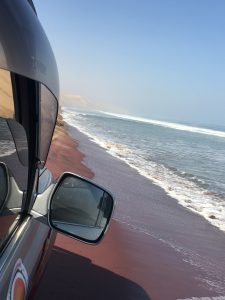
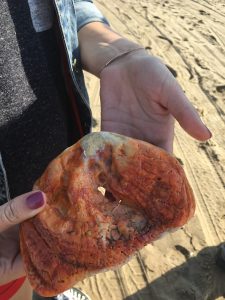
We took a tour of Sandwich Harbor, where the dunes met the ocean. The towering dunes put the northern Michigan Sleeping Bear Dunes to shame. Our guide explained how the beautiful shell we had found in the ocean was a 1.5 million year old fossil and was only found in the 10 mile stretch of beach we would be traveling. On our way to our final destination we saw jackals, springbok, and flamingos!
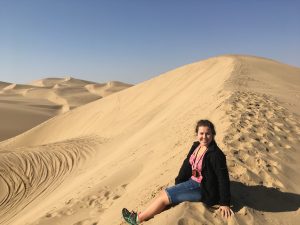
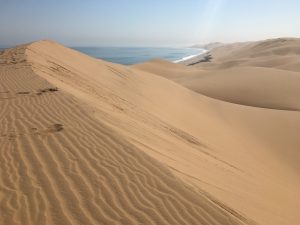
We climbed up these towering dunes and ran down. After lunch we went in the jeep over the dunes back to our accommodation! It felt like being on a roller coaster. The sand rumbled when we slid down; it was exhilarating 🙂


We took the challenge of climbing up the tallest dune, Dune 7, in the world. It was super steep and at times I had to crawl upward. It was worth the trip up since the sunset was stunning over the dunes and the water.
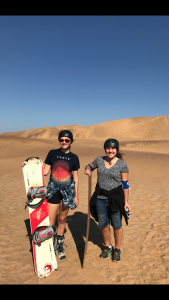

We took a day trip to the largest German town outside of Germany, to Swakopmund. We found a dune boarding tour, which was super fun. Our weather was a winter anomaly since East Desert winds from the Kalahari created sandstorm conditions. The wind was so powerful on the dunes that you couldn’t open your eyes and any exposed skin was stung with the whipping of sand. It was crazy at the top but the ride down was fantastic!
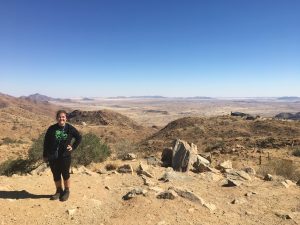

After our adventures on the coast we joined a camping tour to the Sossusvlei region, known for the towering red dunes and flat salt pans.

We walked down into the beautiful Sesriem Canyon, a rock formation shaped from a dried up river. We saw water at the start of the canyon and were informed that the fish that lived in the river during the wet season journeyed under ground and could survive for years without ever coming above ground.
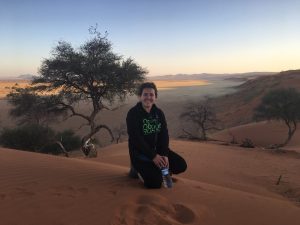
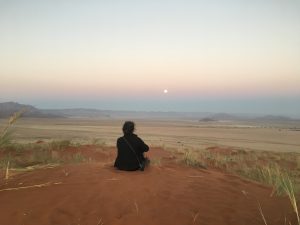
Just near our campsite we hiked up Dune 1 to view the sunset and a stunning moon rise. The red sand contrasted beautifully against the shades of blue and pink in the sky.
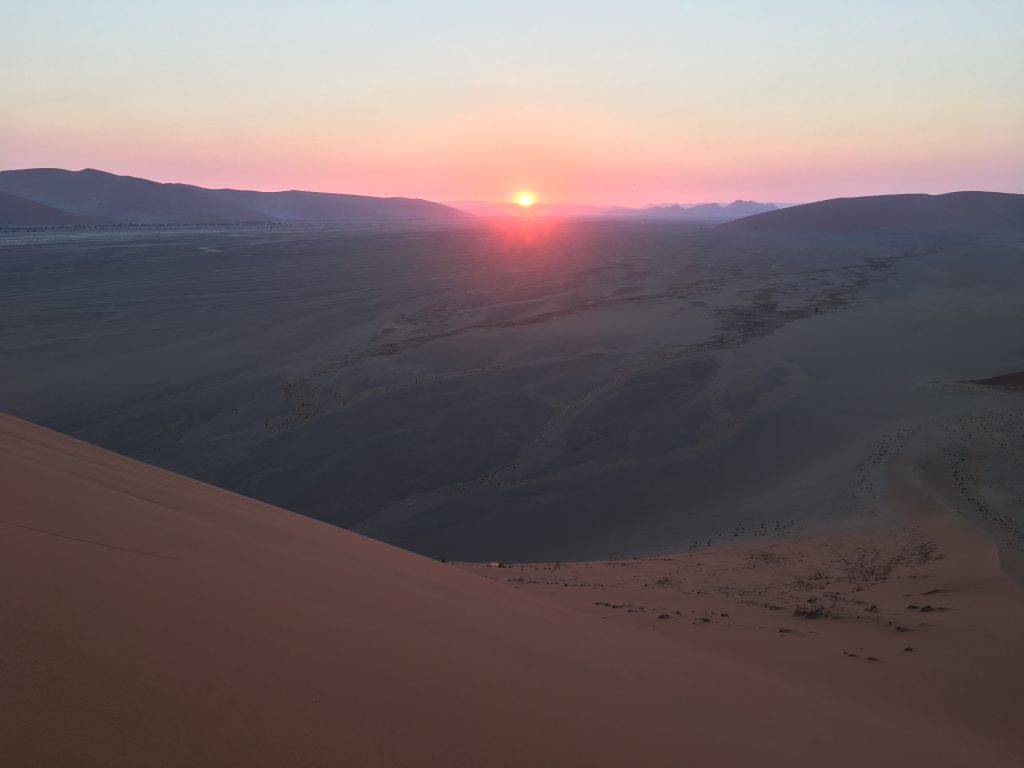
It was fun to watch the stars and enjoy the camp fire. In the morning we woke up around 5:30 to hike up Dune 45 to view the sunrise. The neon shades were unbelievable.
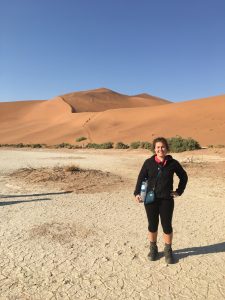
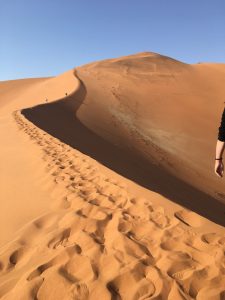
After breakfast we journeyed to the Dead Vlei region and hiked up Big Daddy Dune to get an aerial view. It was quite taxing, but we took it steady and slow, being sure to take multiple ‘scenic breaks’.
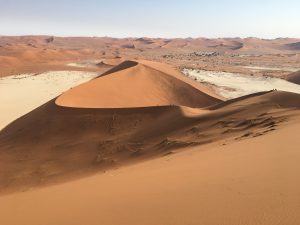
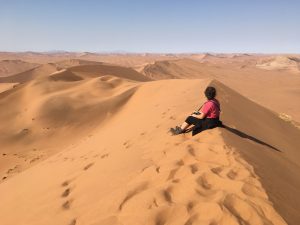
The top of the dune proved to be a beautiful view of the salt pans and stretching dessert landscape.
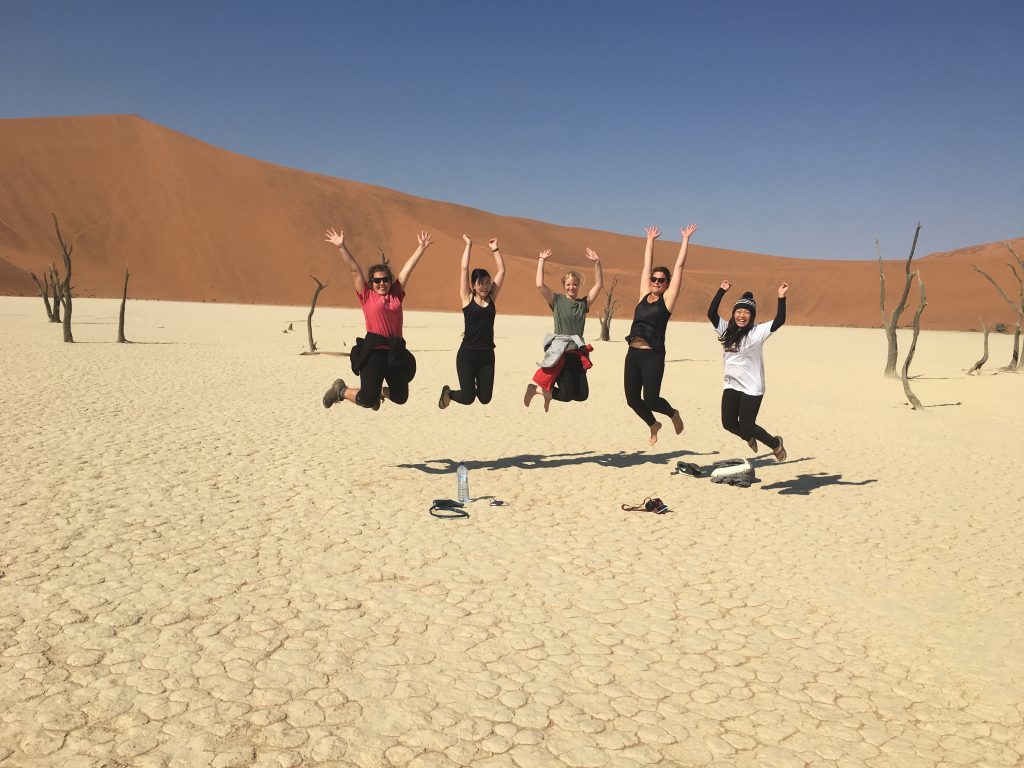
We made our way down the dune and across the salt pan. My desert adventure amazed me; it showed me how diverse the countryside of southern Africa really is. This trip was one of my favorite due to its unique qualities. I enjoyed visiting a lesser known destination; I wish to seek these off-the-grid locations for the future 🙂



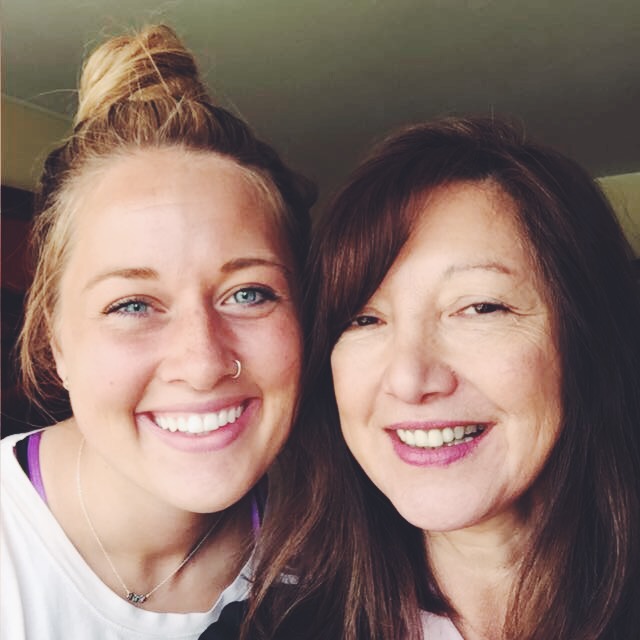
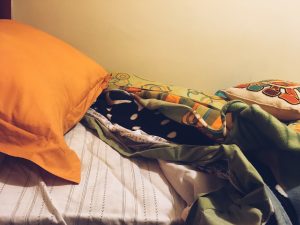
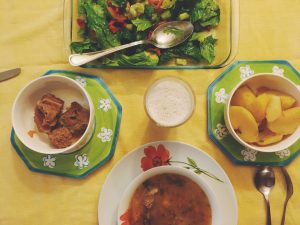
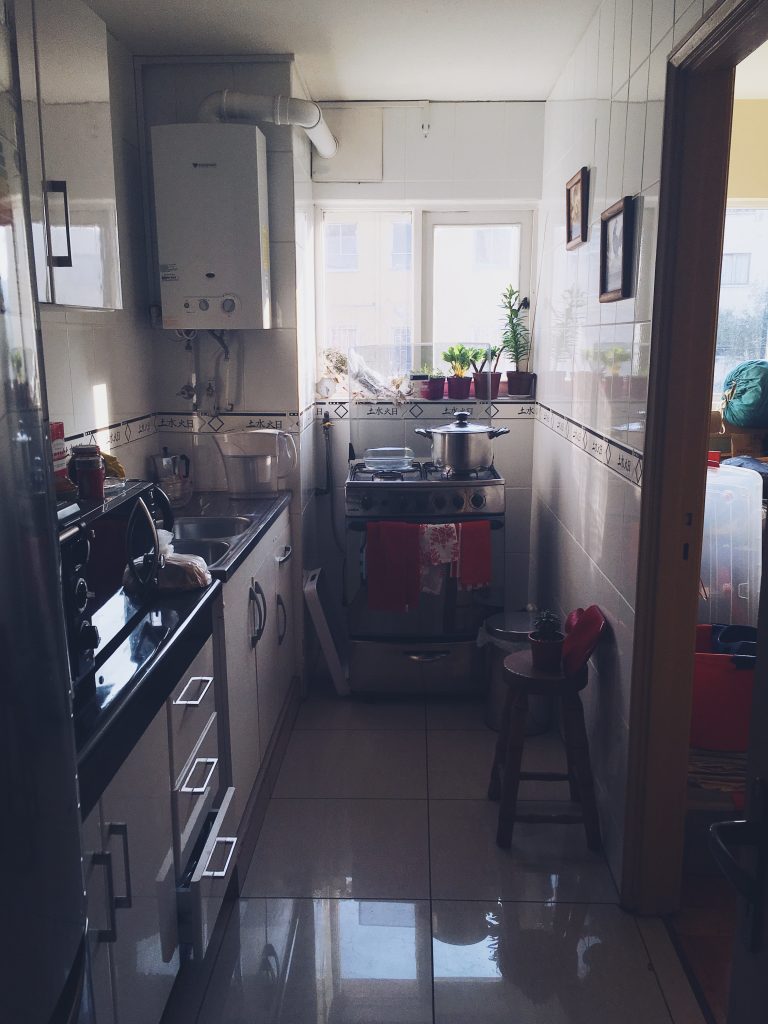





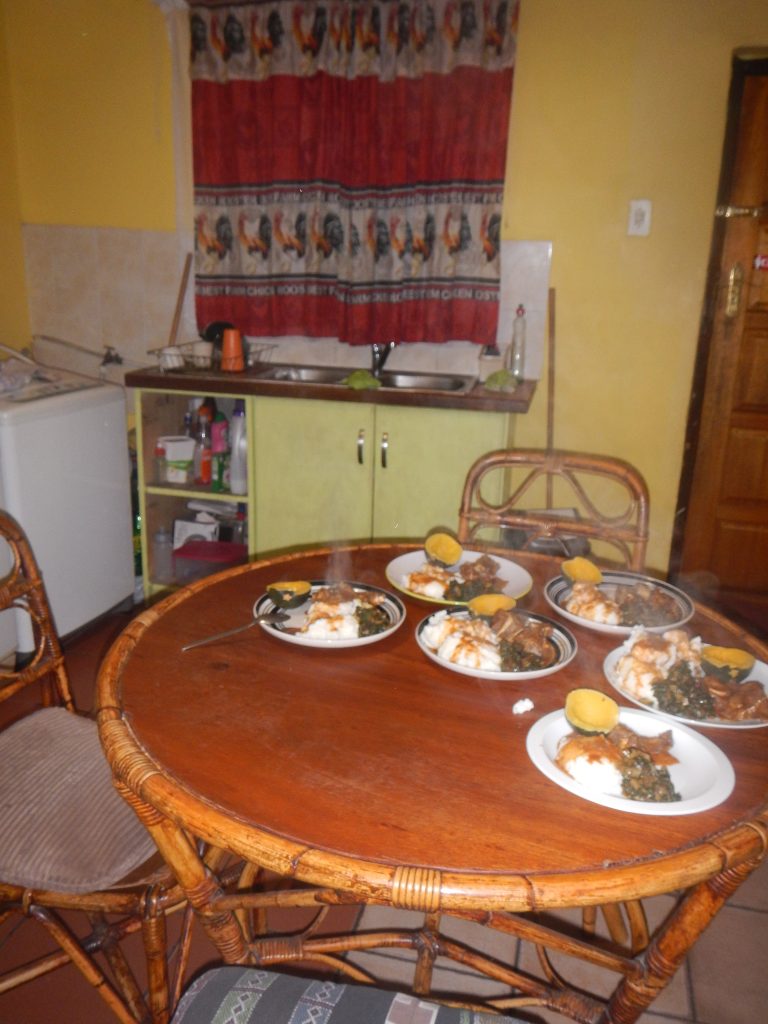 Mama asked for our help in cooking the cuisine, a traditional dinner of pap (maize meal), lamb, and vegetables. In the local way we ate with our hands and drank tea 🙂
Mama asked for our help in cooking the cuisine, a traditional dinner of pap (maize meal), lamb, and vegetables. In the local way we ate with our hands and drank tea 🙂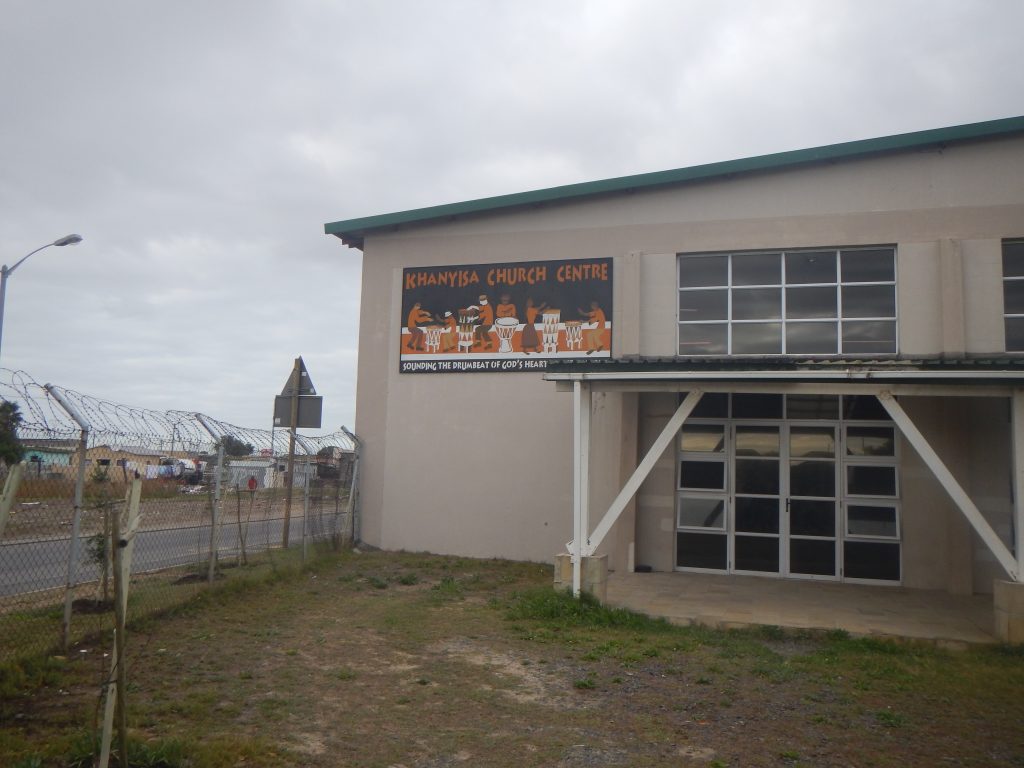
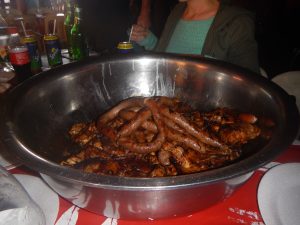
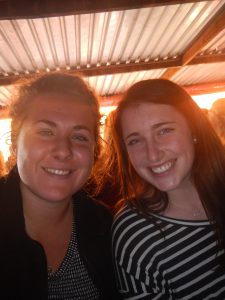
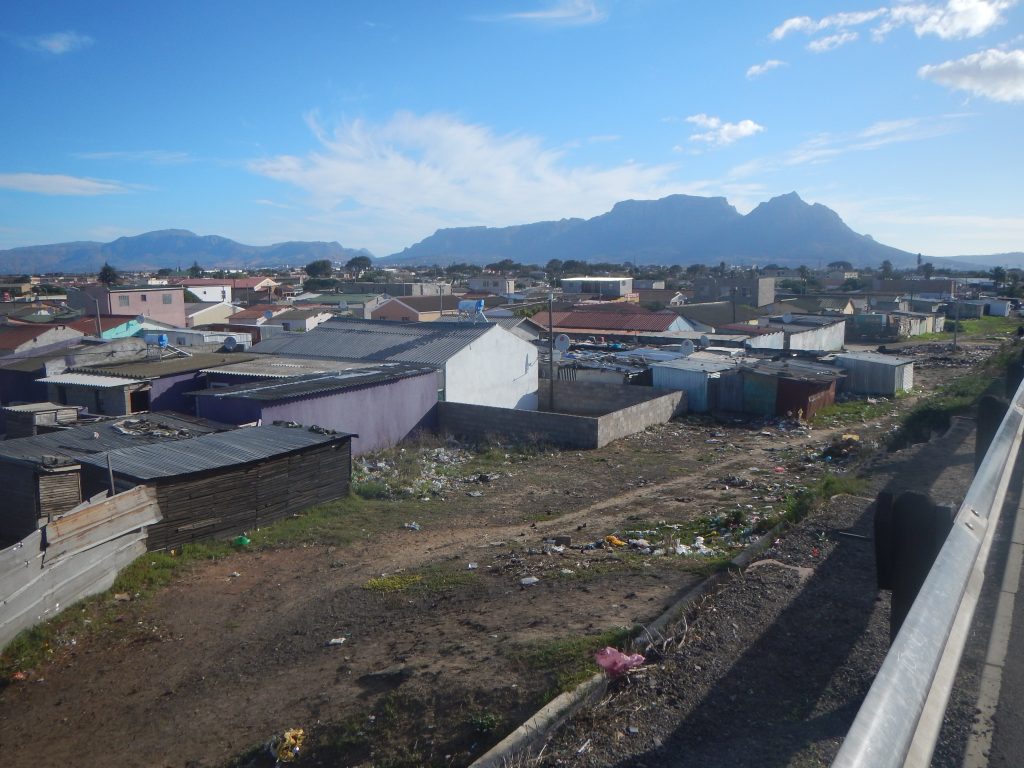
 strips of beautiful coast that gave the city a Miami-like feel. We saw large groups of locals dancing in the water-side with buckets. It was later revealed that salt water is a known cure to get rid of negative spirits among the Zulu people. While traditional medicine and coinciding practice is integral to life in Cape Town, often the traditions are not recognizable. It was fascinating to finally view the traditions in a more open and clear manner.
strips of beautiful coast that gave the city a Miami-like feel. We saw large groups of locals dancing in the water-side with buckets. It was later revealed that salt water is a known cure to get rid of negative spirits among the Zulu people. While traditional medicine and coinciding practice is integral to life in Cape Town, often the traditions are not recognizable. It was fascinating to finally view the traditions in a more open and clear manner.

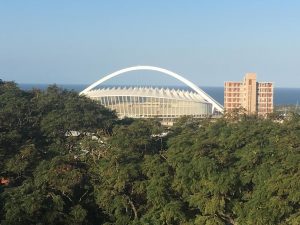

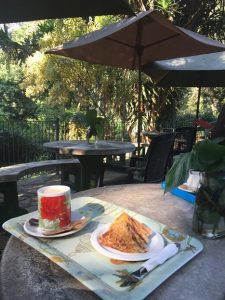 oldest Botanical Garden in South Africa and ate breakfast with prowling monkeys. Luckily this time we managed to eat all our lunch without them taking a bite.
oldest Botanical Garden in South Africa and ate breakfast with prowling monkeys. Luckily this time we managed to eat all our lunch without them taking a bite.

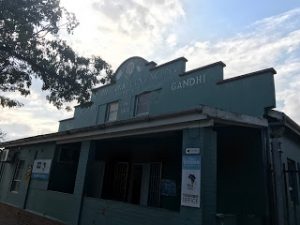
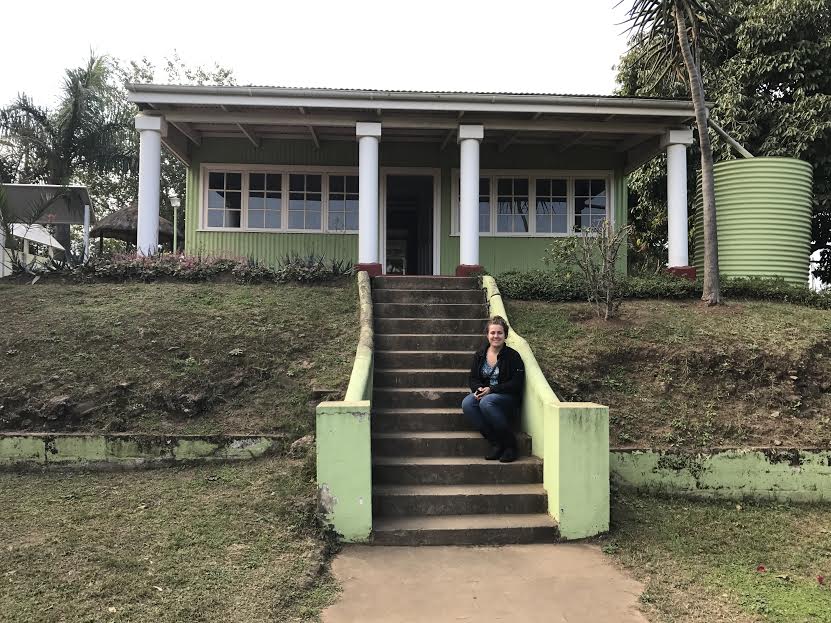


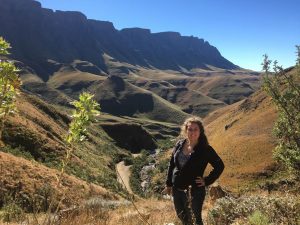
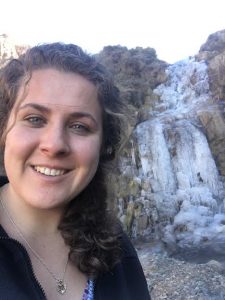
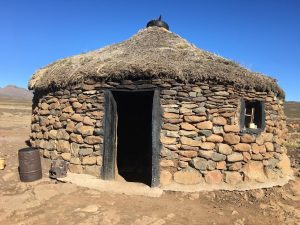

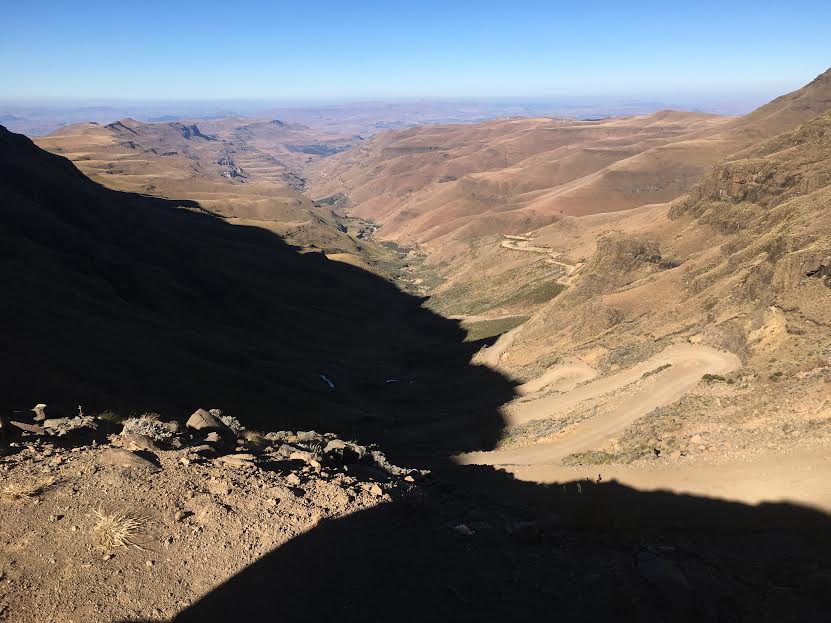
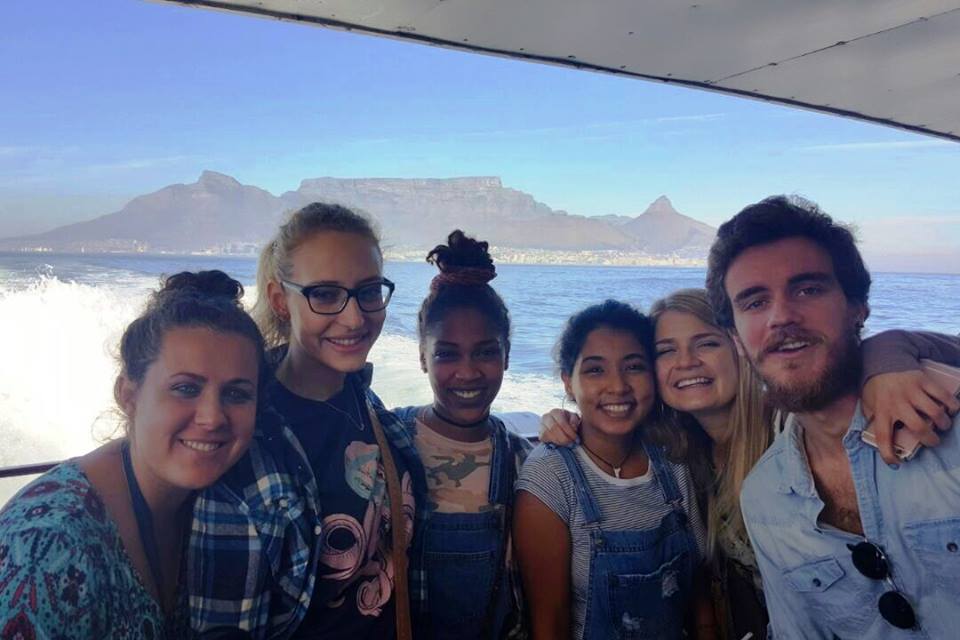

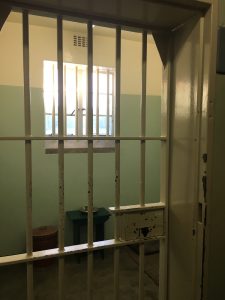 Mandela and many freedom fighters who helped end the struggle in 1991. We were exposed to the altering mindset of the first democratic president of South Africa as it was explained that the young Mandela refused to ‘renounce violence as a means to end apartheid’. It was in time reflecting in prison and conversing with others that Mandela altered his strategy to conduct a future without violence or revenge against the oppressor but rather with peace and reconciliation. This transformation in thought of a revered leader demonstrates the human capacity for change in the path towards racial reconciliation.
Mandela and many freedom fighters who helped end the struggle in 1991. We were exposed to the altering mindset of the first democratic president of South Africa as it was explained that the young Mandela refused to ‘renounce violence as a means to end apartheid’. It was in time reflecting in prison and conversing with others that Mandela altered his strategy to conduct a future without violence or revenge against the oppressor but rather with peace and reconciliation. This transformation in thought of a revered leader demonstrates the human capacity for change in the path towards racial reconciliation.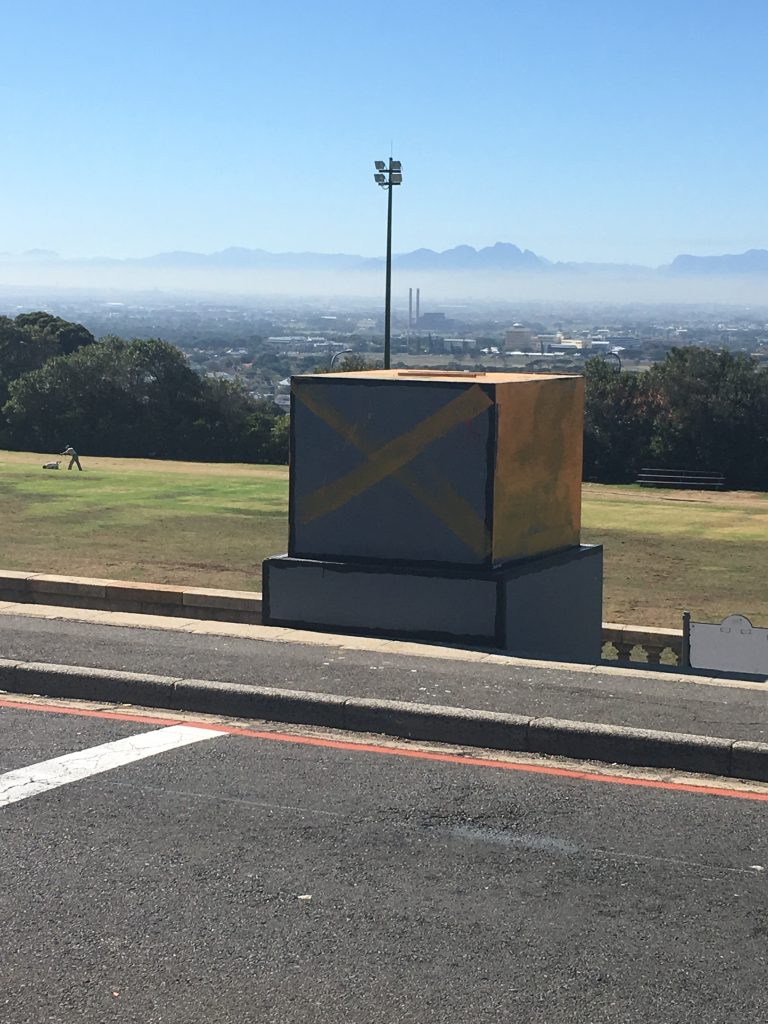 campus up until 2015 was a Cecil Rhodes statue commemorating his donation of lands to supply the university with property. However, Rhodes was a dominating colonizer who spared little concern for the local African people. Students found his ‘presence’ on the campus disheartening and sought to remove the statue. Protesting reached new levels under the banner #RhodesMustFall. A national phenomenon occurred when the campus responded to the movement by in fact removing the statue.
campus up until 2015 was a Cecil Rhodes statue commemorating his donation of lands to supply the university with property. However, Rhodes was a dominating colonizer who spared little concern for the local African people. Students found his ‘presence’ on the campus disheartening and sought to remove the statue. Protesting reached new levels under the banner #RhodesMustFall. A national phenomenon occurred when the campus responded to the movement by in fact removing the statue.
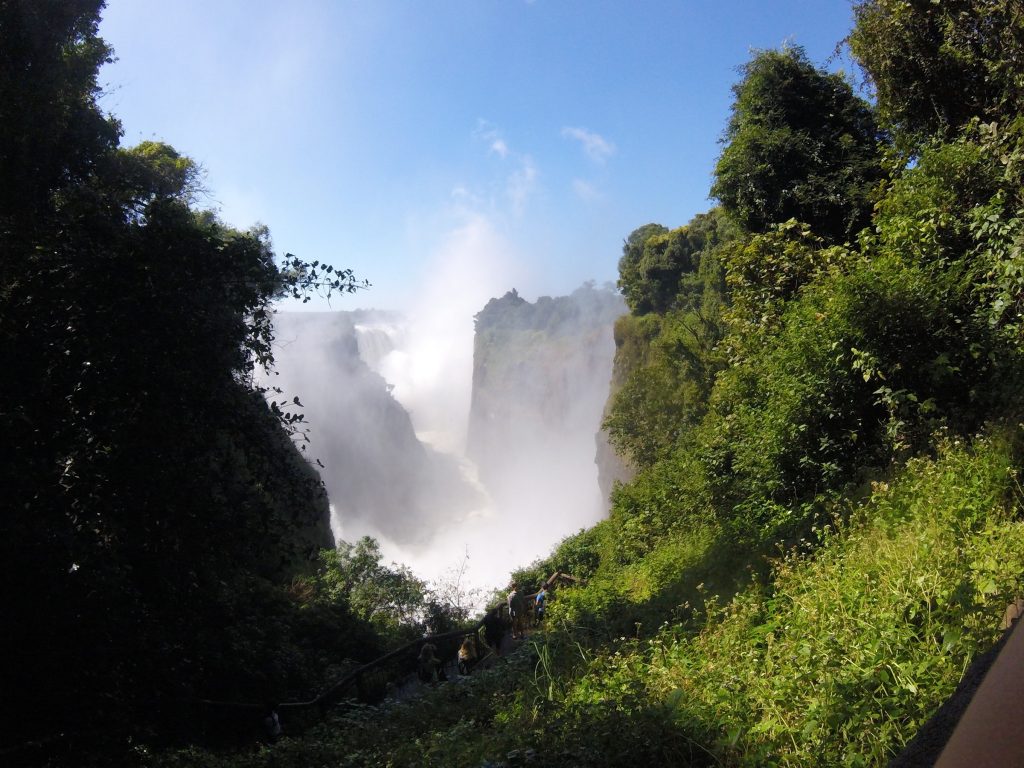
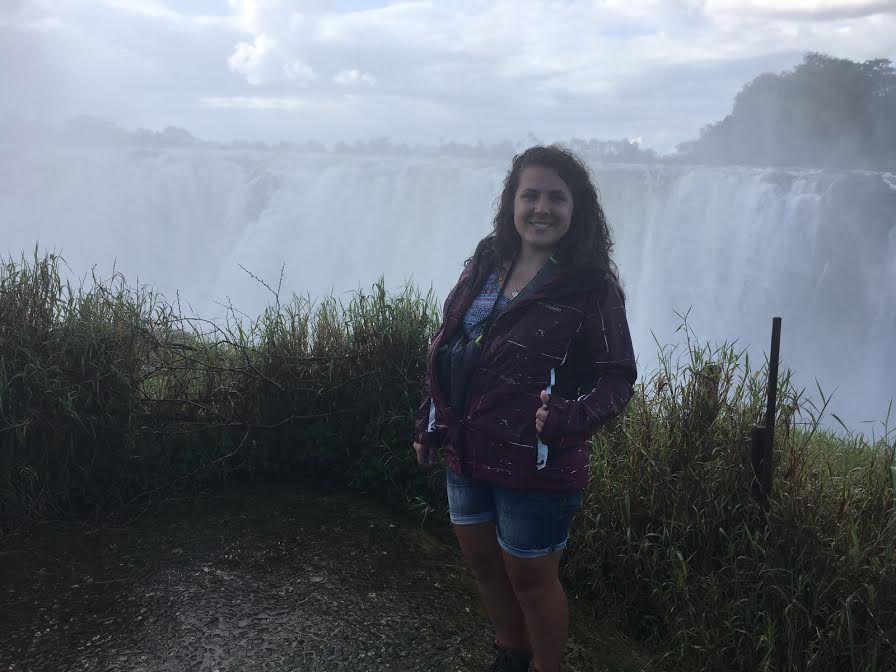 It was crazy to walk more than a mile to view the entire length of the falls. Since it was the rainy season, the powerful falls created mist that resembled a torrential downpour. I became soaked walking along the path as rain came from all directions.
It was crazy to walk more than a mile to view the entire length of the falls. Since it was the rainy season, the powerful falls created mist that resembled a torrential downpour. I became soaked walking along the path as rain came from all directions.

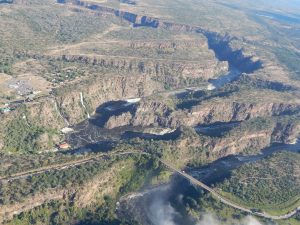
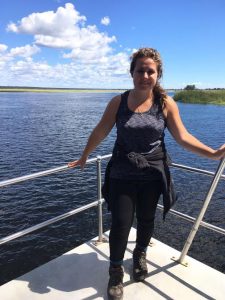
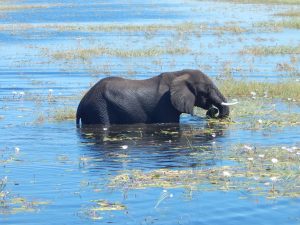
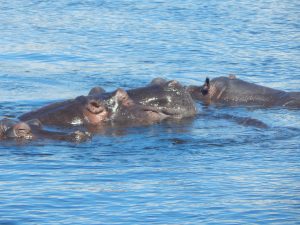


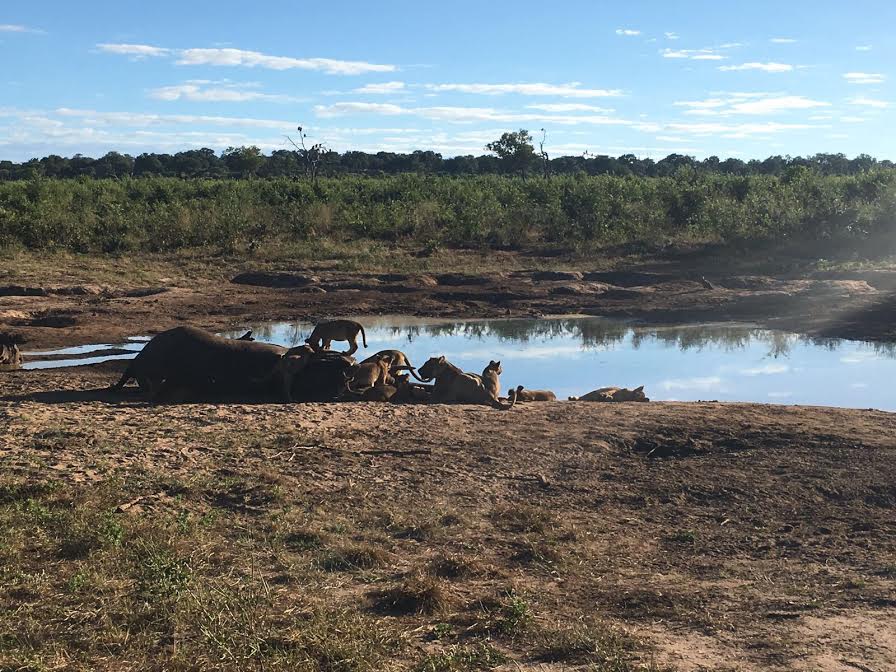
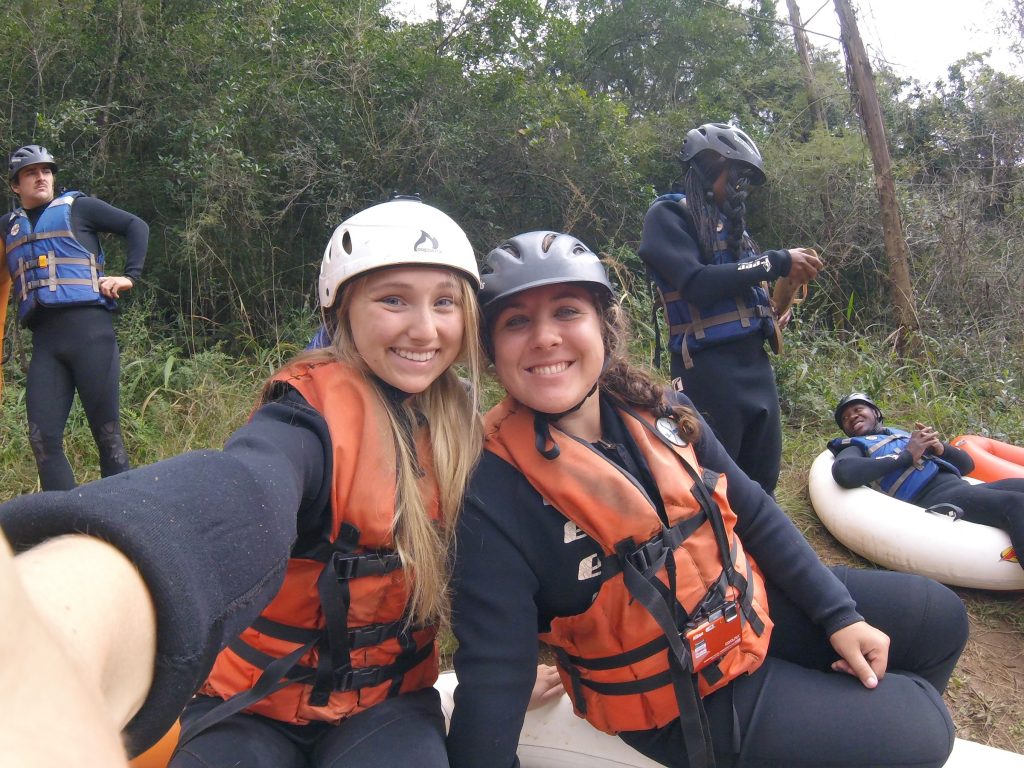
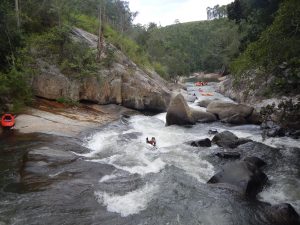
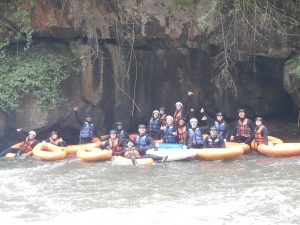

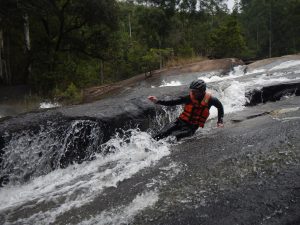
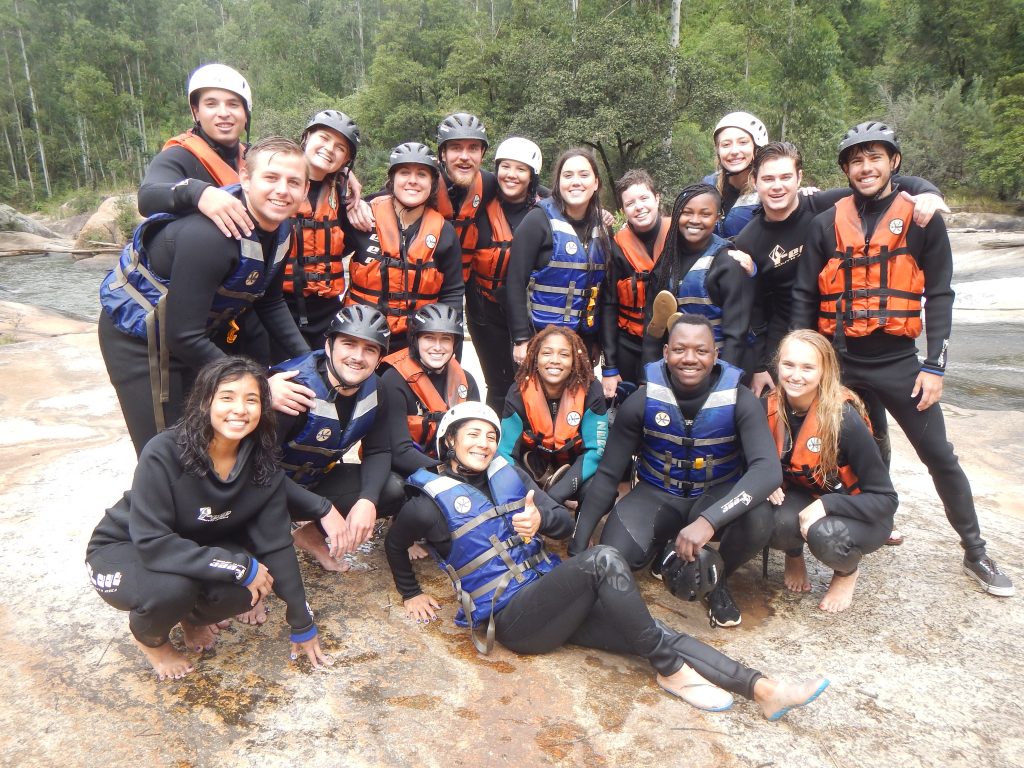
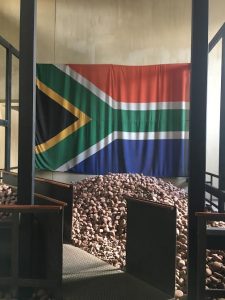
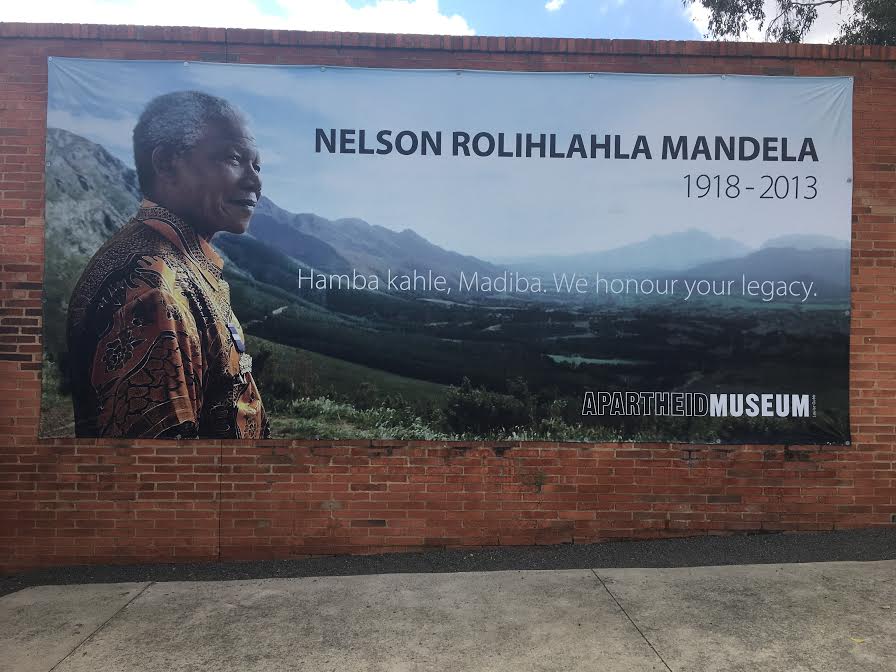


You must be logged in to post a comment.